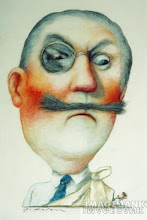1Steven Tan Chong Yew
1 Branding & Marketing
1(chongyew.tan@gmail.com / steven_tan@oum.edu.my)
Abstract
Packaging is the factor that influences consumer decision making at the point of sale, and is the last opportunity to persuade consumer. However, many marketers are lost in finding the intents behind a packaging design, thus, often, base on ‘feeling’ in design packaging communication.
Keywords: Packaging, Communication
1. Packaging is Branding
Brand is a symbol that marketer wish the consumer to correlate with a product. This symbol is built with the dimension of tangibility and intangibility; both dimension assist in relating the brand to the life of consumer. Both dimensions represent the synthesis of information gained from research and experience with consumer, which marketer subsequently adopt in their marketing approach where applicable, and that subservient to consumer brand knowledge.
Packaging is a factor embedded in the tangibility element. Packaging can drive consumer’s perception towards a brand, and literally, develop into actual experiences when consumers purchase the products. Packaging is the last opportunity a marketer has to persuade consumer. Packaging works at the end of consumer decision making process, and is a final impulse to consumers purchasing decision made at the point of sale. Packaging is the only final information touch-point consumer can get to understand about the products. Thus, the thinking of what to put on package, how, and where it should be placed on package determine the effectiveness of packaging communication.
A new product goes through chain of process starting from zero ground until the product is ready for end user. However, without proper guidelines to inspire thinking, marketers can sometimes be carried away by the emotion or matters of the moments, and decision is then driven by ‘feelings’. And getting the logic of the placement on the package correctly has always been a vexatious issue of marketer.
2. Get the objective right
The design of the package depends on the brand objective; therefore, it is important to set the objective right; the objective must be clear, and be prioritized. The objective of the package is the intention of the packaging, of all, should comprises of the following, a) maximize visibility of the package in store level, b) Clear message is to deliver to consumers; consumer must be able to get what you want them to get!, and c) maximize the intention to purchase!
2. 1 Maximize visibility!
The use of appropriate color can enhance the visibility of the package because color plays a role in determining the degree of on-shelves impact, color also acts to turn people on or turn people off at the same time; thus using the wrong color on package can be a disaster.
Consumers’ reaction over certain color is also influenced by their cultural background. A brand needs to understand the profile of their target consumer to have a grasp of consumers’ preferences. The outcome of the usage of certain color should make consumer enlightened, surprised, noticed, and said, ‘there’s something over there’
Placement of visual is crucial. The usage of photo illustration on the package is as important; Photo can be a point of attraction or point to nurture the intention to purchase. The objective of the photo must be single minded, if marketers in hope to attract consumers’ attention using pictorial illustration; then the photo should be appealing to consumers. Picture can be any cute cartoon characters, celebrity, or actual consumer photo. The picture should carry the ‘surprise’ element to the consumers, where it captures their attention or interest to the package. The consumer should be able to respond and said, ‘Look at that, so cute!’
2.2 Clear Message!
You do not put a message on the package for nothing. Marketer needs to understand the message that they wish to deliver through the packaging. Marketers are always encouraged to list their intents of communication by priority (of all, brand name is always top the list!) Marketers must also try to keep to 3 important messages to communicate on pack so that the effectiveness of the packaging communication is not diluted by frivolous messages. Last but not least, the message should not be ephemeral; the intents must be proven strong and creating impact to consumers, and log lasting.
2.2.1 Here, the story begins!
All packaging elements play up the total effectiveness of packaging communication. However, the vexatious issue for a packaging is what constitutes the story on the package made up by the packaging elements. Very often, Decision on what to put on the package is based on ‘feel’ and this feel is not always right. Packaging elements must be able to put into a sentence that means something, and that something must be your intended message (example as shown above).
3.0 Intention to purchase!
Marketers need to understand what laid on the package plays a role in capturing consumers’ interest and that interest could translate into high or low intention to purchase. Intention to purchase is the consumer’s respond towards the package in the store level before purchasing decision is made. It can translate into actual purchase, and when consumer is said to have high intention to purchase, it is most likely that consumer prefers the package over competitors’. There is no rule to guide a marketer in creating the intention to purchase, because it is highly related to consumers’ insight in individual market. Marketer is then required to make an effort in understanding consumer needs.
*******END********
Steven Tan Chong Yew
B.A (Hon) Bus. Admin (Marketing Mgt), Anglia Polytechnic University,
MBA (International Business),
NOTE: The views expressed herein are solely writer’s personal opinion. Readers may email writers at chongyew.tan@gmail.com






No comments:
Post a Comment